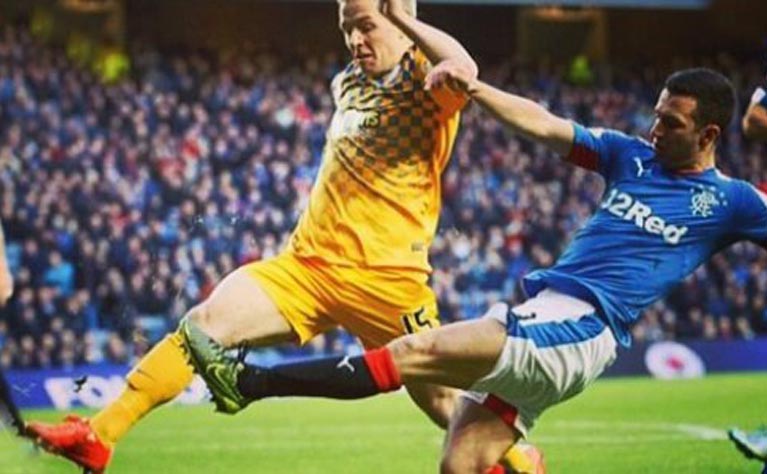What is kneecap (patella) instability?
The kneecap (patella) is in the V-shaped groove at the bottom of the thigh bone, the trochlear groove.. The knee joint is stabilised and supported by ligaments, which are thick bands of rubbery tissue connecting bones at the knee joint. The main ligament that stabilises the knee is the medial patella-femoral ligament (MPFL). If this is torn, it can mean the kneecap is more likely to dislocate in the future which is very painful and can also damage the surrounding tissues, leading to cartilage injuries.
Normally, the trochlear groove is smooth, allowing the patella to glide smoothly as the knee moves. Sometimes, however, the trochlea develops a bony spur or it may be malformed from birth – either flat or convex. Trochlear dysplasia is a condition in which the trochlear groove is abnormally shaped, causing the kneecap to dislocate by slipping out of the groove.

Conor, professional footballer, 23
“I will always be grateful to Adrian for his approach and expertise and the opportunity this has given me to continue with my career after two years out injured.”
What causes kneecap (patella) instability?
Knee instability is caused by damage to the ligaments in the knee. Each time the kneecap moves out of place, or dislocates, it stretches the ligaments, which can cause ligament injuries.
Factors that increase the risk of kneecap instability include:
- Having an internally twisted or rotated thigh bone and/or loose ligaments surrounding the knee (this is more common in adolescent girls)
- Taking part in sports that involve twisting the knee such as skiing, football, netball, hockey, tennis or rugby
- Knee injuries: during an injury to the knee, the MPFL can rupture (tear) and cause the kneecap to dislocate. If this happens, you’re more at risk of having further dislocations in the future
Kneecap (patella) instability
The symptoms include:
- Dislocation of the knee – which can happen repeatedly
- Severe pain, swelling and difficulty in walking
- ‘Popping’ or ‘cracking’ and stiffness in the joint
- The knee giving way or buckling
Left untreated, it can also cause cartilage injuries and lead to arthritis in the future.
Your consultant will discuss your symptoms with you and examine your knee to check for tenderness, stiffness, swelling and check your range of movement. In most cases, he will arrange for you to have an X-ray to confirm the diagnosis. He may also arrange for you to have a magnetic resonance imaging (MRI) scan to examine any damage to the cartilage.
In most cases, your consultant will advise you to have MPFL reconstruction surgery to stabilise the kneecap. You may also need additional ligament surgery. If the instability is caused by a bone deformity, this can be corrected during knee realignment (osteotomy) surgery. In some cases, you may also be offered Activated Mesenchymal Pericyte Plasma injections (AMPP®). If you have been diagnosed with trochlear dysplasia, you may be offered Trochleoplasty.
Looking to speak to our team? Call us on 020 7046 8000 020 7046 8085
To book an appointment
or refer a patient
